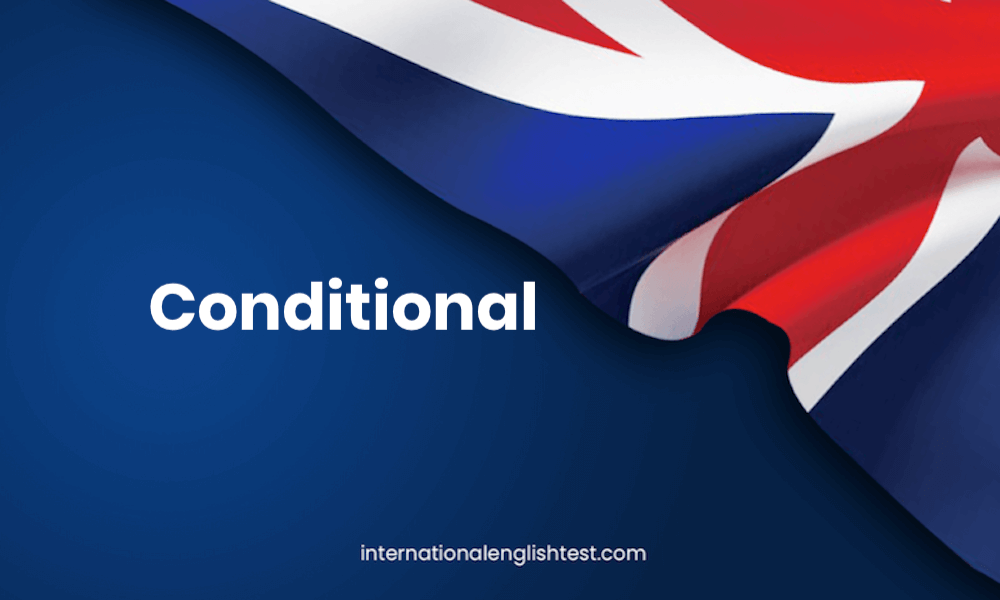Conditional sentences are vital structures in the English language, used to discuss possible outcomes, hypothetical situations, and the results of specific actions. In this article, we will explore the different types of conditional sentences, their functions, and how they are formed. Whether you’re preparing for the International English Test (IET) or improving your general English skills, mastering conditional sentences is essential for clear and effective communication.
What is a Conditional Sentence?
A conditional sentence consists of two parts: the if-clause and the main clause. The if-clause presents a condition, and the main clause outlines the result or consequence of that condition being met. These sentences allow us to speculate about the present, future, and past and are typically used to describe real, possible, or hypothetical situations.
Types of Conditional Sentences
There are five main types of conditional sentences in English. Each type serves a different purpose and has specific rules for forming sentences. Here’s a breakdown of the different types:
1. Zero Conditional
The zero conditional is used to talk about facts, general truths, or things that always happen under certain conditions. The verb tenses used are the simple present in both the if-clause and the main clause.
Form:
- If + simple present, simple present
Examples:
- If you heat ice, it melts.
- If it rains, the grass gets wet.
The zero conditional is often used with “when” instead of “if” to indicate general truths:
- When you heat ice, it melts.
Read more about how to use the zero conditional.
2. Type 1 Conditional
The type 1 conditional is used to discuss real or likely situations in the present or future. It expresses a possible condition and its probable result. The if-clause uses the simple present, and the main clause uses the simple future.
Form:
- If + simple present, simple future
Examples:
- If you don’t hurry, you will miss the train.
- If it rains today, you will get wet.
This conditional is used for situations that are likely to happen in the future, based on a present condition.
Read more about how to use the type 1 conditional.
3. Type 2 Conditional
The type 2 conditional expresses hypothetical or unreal conditions and their probable results in the present or future. The if-clause uses the simple past, and the main clause uses the present conditional or present continuous conditional.
Form:
- If + simple past, present conditional or present continuous conditional
Examples:
- If you went to bed earlier, you wouldn’t be so tired.
- If it rained, you would get wet.
- If I spoke Italian, I would be working in Italy.
The type 2 conditional talks about unreal situations that aren’t true now but could have a possible outcome.
Read more about how to use the type 2 conditional.
4. Type 3 Conditional
The type 3 conditional is used to talk about unreal past conditions and their probable results in the past. The if-clause uses the past perfect, and the main clause uses the perfect conditional.
Form:
- If + past perfect, perfect conditional
Examples:
- If you had studied harder, you would have passed the exam.
- If it had rained, you would have gotten wet.
- If I had accepted that promotion, I would have been working in Milan.
This type of conditional reflects on past actions that didn’t occur and their hypothetical outcomes.
Read more about how to use the type 3 conditional
5. Mixed Conditional
The mixed conditional is used when discussing an unreal past condition and its likely present result. The if-clause uses the past perfect, while the main clause uses the present conditional.
Form:
- If + past perfect, present conditional
Examples:
- If I had studied, I would have a better job now.
- If we had looked at the map, we wouldn’t be lost.
- If you weren’t afraid of spiders, you would have picked it up and put it outside.
This conditional combines the past and the present to discuss hypothetical situations that stem from past events.
Read more about how to use the mixed conditional.
Why Should You Learn Conditional Sentences?
Understanding conditional sentences is essential for expressing different degrees of certainty, possibility, and hypothetical situations. Whether you’re discussing general truths (zero conditional), possible future events (type 1 conditional), unreal or hypothetical present situations (type 2 conditional), or past regrets and hypothetical results (type 3 or mixed conditionals), knowing how to use conditionals correctly can enhance your English skills significantly.
Practice with the International English Test (IET)
If you’re aiming to improve your proficiency in English, mastering conditional sentences is crucial for both speaking and writing tasks in the International English Test (IET). The IET evaluates your ability to use different grammatical structures, including conditionals, effectively in various contexts. By taking the IET, you will gain a better understanding of conditional usage and receive an accurate reflection of your language skills.
Conclusion
Conditionals are an essential aspect of English grammar that help us express possibilities, hypothetical situations, and outcomes. Whether you’re preparing for an exam like the IET or simply want to improve your English, mastering the zero, type 1, type 2, type 3, and mixed conditionals will help you communicate more effectively in both everyday and academic contexts.
Test your English skills today and take the International English Test to measure your progress and earn an official certificate.

